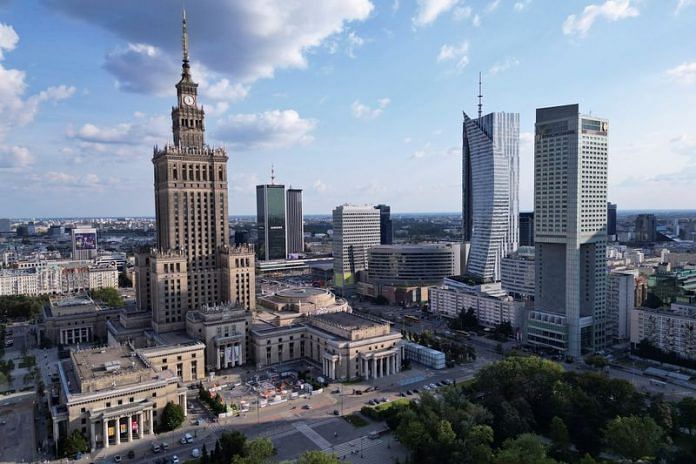WARSAW (Reuters) -Seventy years after Soviet dictator Josef Stalin “gifted” the Palace of Culture and Science to Warsaw, the towering skyscraper at the heart of Poland’s capital still stirs strong feelings among Poles.
The Palace – which is marking the 70th anniversary of its official opening on July 22, 1955, when Poland was part of the Soviet-led communist Eastern Bloc – was conceived by Stalin as a symbol of Soviet domination and initially bore his name.
“If you put a big palace, a kind of skyscraper at the time, in the middle of the city that can be seen from 30 km (19 miles)away, it shows the power,” said Dorota Zmarzlak, a member of the palace’s board.
Younger people no longer see it that way, she said.
After the end of communist rule in Poland in 1989, many Soviet-era monuments were removed and street names changed.
The Palace remained, even though prominent politician Radoslaw Sikorski, who is now Poland’s foreign minister, called for it to be demolished in 2007.
It has been used as a concert venue and hosted political events, exhibitions and fashion shows. Singers Andrea Bocelli and José Carreras have performed there. A riot broke out when the Rolling Stones played there in 1967, long before communist rule ended.
“It was an escape for me, I could go somewhere,” said Zygmunt Kowalski, 89, a retired railway worker who moved to Warsaw a month after the Palace opened, and swam with his daughter in its pool as well as seeing films and concerts there.
“Everything can be torn down, but let this stay for future generations, as proof of what once was … the next generations will have evidence that communism was here,” he said.
The Palace still has four theatres, a large cinema and museums, and hosts exhibitions. The concert hall is being renovated.
Some younger Warsaw residents focus less on the Palace’s political history than on its status as a Warsaw landmark.
Karol Los, a 23-year-old student, said the Palace, now surrounded by modern skyscrapers, is inseparable from the city’s identity.
“For me, it’s a symbol of Warsaw. I think young people see it very differently than the older generation,” he said.
Ukrainian architect Valerii Shcherbak, 32, admires the palace’s architectural detail and its popularity with tourists.
“This is history and we need to respect it,” he said, noting that many Soviet-era buildings in Ukraine have been destroyed. “What happened in the past should be kept for history, not destroyed.”
(Reporting by Kuba Stezycki, writing by Anna Wlodarczak-Semczuk; Editing by Timothy Heritage)
Disclaimer: This report is auto generated from the Reuters news service. ThePrint holds no responsibility for its content.




